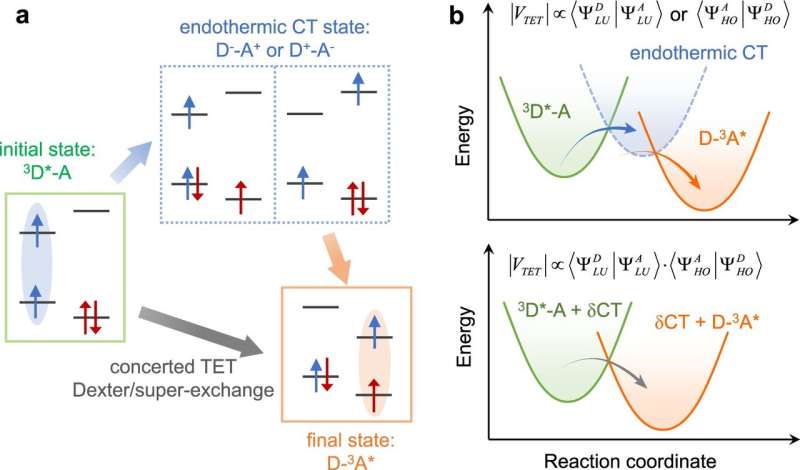Endothermic charge-transfer mediates shallow distance-dependent triplet energy migration

Recently, a research group led by Prof. Wu Kaifeng from the Dalian Institute of Chemical Physics (DICP) of the Chinese Academy of Sciences (CAS) found that endothermic charge-transfer-mediated triplet energy transfer (TET) is a new mechanism featuring shallow distance-dependence.
This study was published in Nature Communications on March 9.
The researchers investigated TET from colloidal CdSe quantum dots (QDs), featuring systematically varied ZnS shell thicknesses, to surface-anchored anthracene molecules.
Time-resolved spectroscopy measurements showed no evidence for anthracene cation and/or anion formation, excluding exothermic charge transfer (CT)-mediated triplet migration.
The TET rate decreased with increasing ZnS shell thickness, with rate attenuation clearly following the trend of hole probability density on QD surfaces rather than the product of electron and hole probability densities. This observation evidenced an endothermic hole-transfer-mediated mechanism.
Temperature dependence of the transfer rate further confirmed the endothermic hole transfer process. The shallow distance dependence of endothermic CT-mediated TET enabled efficient triplet migration over donor-acceptor separation beyond Dexter or super-exchange paradigms.
More information: Runchen Lai et al. Shallow distance-dependent triplet energy migration mediated by endothermic charge-transfer, Nature Communications (2021). DOI: 10.1038/s41467-021-21561-1
Journal information: Nature Communications
Provided by Chinese Academy of Sciences





















